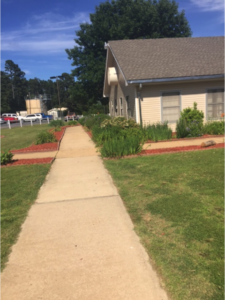In the first of our series of blogs throughout our Justice Solutions tour, Jesuit Social Services’ Executive Director of Advocacy and Strategic Communications CATHERINE NEVILLE writes about her experiences exploring Missouri’s innovative youth detention model.
While the United States’ approach to incarceration differs from state to state, some parts of the USA are leading the way towards effective and humane youth justice systems.
Earlier this year Jesuit Social Services met with US expert Vincent Schiraldi, who transformed Washington DC’s approach towards youth justice, while the ‘Missouri model’ is hailed as a revolutionary approach to meaningful reform which Australian states can learn from.
Jesuit Social Services’ Chairman Patricia Faulkner and I were fortunate to meet with key staff from Missouri’s Division of Youth Services to learn more.
Missouri’s youth detention facilities are small, home-like and based in local communities. There are no fences, and if doors are locked, it is to keep people out rather than the young people in.
The young people are supervised at all times and there is a strong emphasis on relationship. The approach is therapeutic and developmental rather than correctional.
It was interesting to note how staffing levels differ to Victoria, where our youth detention centres have been experiencing staff shortages and a lack of experienced staff. In Missouri, staff members are youth specialists (not corrections officers), there are high ratios of staff to young people and group leaders supervise teams.
The success of Missouri’s innovative approach is supported by a low recidivism rate – three years after discharge, 70 per cent of young people have avoided further involvement with the justice system.
By contrast, in Australia 74 per cent of young people who leave detention return to involvement with youth justice within 12 months.
Just as impressively, 77 per cent of young people in the system earn high school credits, compared to less than half (47 per cent) across the USA.
 On the second day of our visit, we visited the Sears Youth Centre which is a Moderate Care Program for boys. On arrival we met with centre manager Rick Stewart and five boys who live there, who are considered leaders at the centre.
On the second day of our visit, we visited the Sears Youth Centre which is a Moderate Care Program for boys. On arrival we met with centre manager Rick Stewart and five boys who live there, who are considered leaders at the centre.
The boys introduced themselves and shook our hands. At this time and throughout the rest of our visits, I was struck by the boys’ social skills. They looked me in the eye when introducing themselves and shook my hand firmly. It was evident throughout our visit that there was a strong emphasis on developing social skills. This aligns with their operating approach that social emotional competence is an essential component of learning, healthy development and navigating life.
We were asked some great questions about Australia and even given some impersonations of an Australian accent!
We then met the rest of the group in the classroom, where the 12 boys in the centre are taught by a qualified teacher with an assistant.
Education is a key component of the program with attendance mandatory every weekday, and young people given age-appropriate tasks. There is also a strong focus on qualifications, and graduation ceremonies are held regularly.
We also visited the workshop, where boys learn various practical skills including welding, carpentry and plumbing. This program has developed strong links with community, for example, students recently made a sign for a local cemetery.
The next day, we visited the Sierra-Osage Treatment Centre, a Moderate Care Program for Girls.
First stop was the classroom which was very interactive! As we arrived, a robot started rap dancing on a table, music was blasting out of speakers, and a presentation was ready to roll.
Then we went to have a look at the girls’ dorm. This was a bright, sunny, tidy room with bunk beds, cupboards, dining room table and couches. On each of the beds was a brightly coloured quilt with the individual girl’s name embroidered on it.
A staff member explained that local women made a quilt for every new girl at Sierra-Orsage. Then the girl would embroider her own name onto it and take it home at discharge.
While we were at the dorm, a couple of the girls presented to us. Susannah (not her real name) performed a rap she’d written about the death of her mother 12 years ago and the grief she’d been suffering since. Through her song, Susannah expressed her inability to deal effectively with her grief until she’d come to this facility. It was very moving and had many of us in tears.
Our visit to Missouri has given insight into what a humane and effective youth detention system can look like. A system with an emphasis on holding young people accountable but also supporting them to develop their social skills and engage with their education, so they can have a brighter future in front of them, and the whole community sees benefit
We look forward to sharing our findings on our return to Australia.



